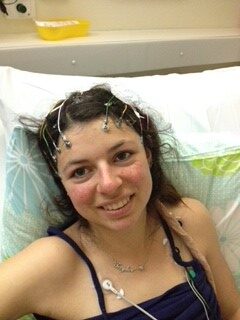Understanding TSC associated epilepsy
A summary of Nabbout, R. et al. Epilepsy in tuberous sclerosis complex: Findings from the TOSCA Study. Epilepsia open 4, 73-84, doi:10.1002/epi4.12286 (2019).
This study helps us understand epilepsy in people with tuberous sclerosis complex (TSC) by analysing the experiences of 1852 people with both TSC and epilepsy involved in the TOSCA project. The TOSCA database includes people with TSC in Australia and 30 other countries. The team includes a total of 170 different centres, so it is a large and complex project. This latest report from the TOSCA team analyses the largest group of people included in a single study of epilepsy and TSC.
This summary article highlights some of the key findings of the study, but we encourage you to read the full article for more information:
www.ncbi.nlm.nih.gov/pmc/articles/PMC6398114/pdf/EPI4-4-73.pdf
Epilepsy is the most common symptom of TSC, being experienced by 83% of people in the TOSCA study. Most of these people experienced their first seizure before they were two years old. However this may not reflect the world-wide population of people with TSC because most of the centres involved in the TOSCA study specialise in epilepsy in TSC. This means that people with TSC who do not have seizures may be underrepresented.
67.5% of people experienced focal seizures, making these the most common seizure type. Focal seizures are those that affect just part of the brain. 58.2% of people achieved seizure control with treatments including various anti-epilepsy medications, mTOR inhibitor medicines, and surgery.
38.9% of people experienced infantile spasms, and approximately half of these also experienced focal seizures. Infantile spasms were more common in children under two years of age, but a small number of people with TSC experienced spasms later in life. 76.3% of people achieved control of infantile spasms with treatment.
The study demonstrates that a child diagnosed with TSC before they have seizures, including before they are born, is at high risk of developing seizures in the first two years of life. This suggests that early detection of seizures through frequent electroencephalography (EEG) and educating parents and carers on seizures is important.
The researchers report that the rates of surgical treatment of epilepsy were lower than they had expected. They highlight the need to have people with TSC who have treatment resistant epilepsy are evaluated by expert epilepsy surgery centres early.
Previous research has suggested that children with treatment resistant infantile spasms were at highest risk of intellectual disability. This study’s results suggest that there is also a strong link between treatment resistant focal seizures and intellectual disability.
Compared with previous studies, this study showed lower rates of treatment resistant epilepsy. This may be caused by earlier diagnosis, improved treatment options, and/or a bias caused by the specialist centres involved in the TOSCA study.
Congratulations to Dr John Lawson from Sydney Children’s Hospital, who is one of the study authors. Thank you to the 101 Australians who are part of the TOSCA project and to Dr Kate Riney from Queensland Children’s Hospital for her contributions to TOSCA.. This project is funded by Novartis and all author conflicts of interest are reported in the paper.

